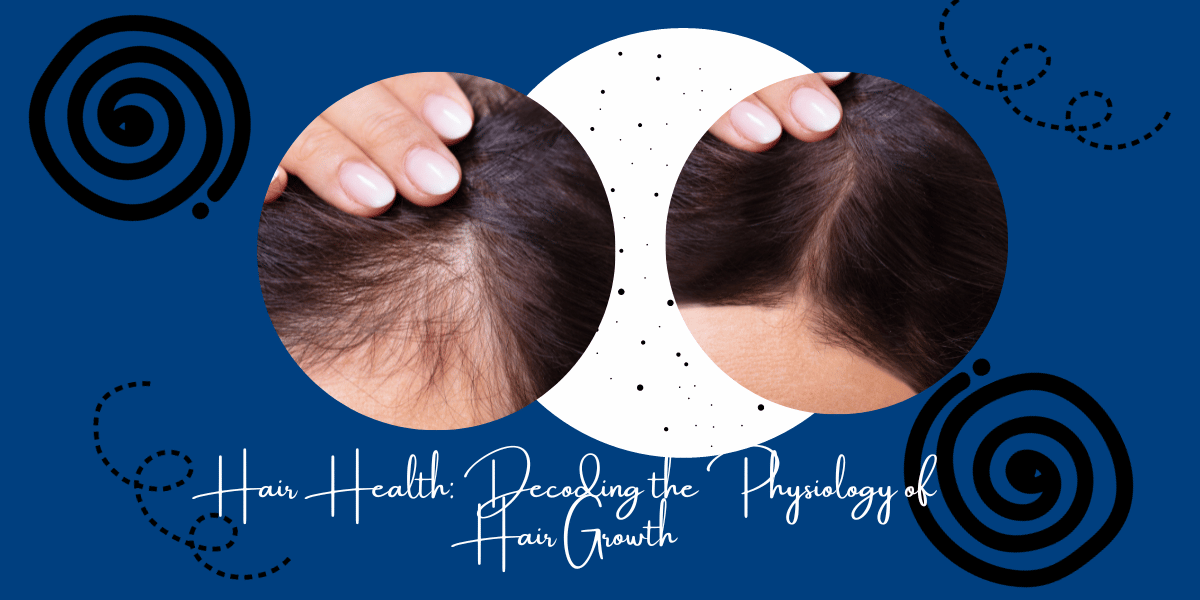Hair Health: Understanding the Physiology of Hair Growth
Unveiling the Science of Hair Growth: Your Guide to Healthy Locks
Hair Health: Decoding the Physiology of Hair Growth
Hair is not just a fashion statement, it’s a reflection of our overall health and well-being. Understanding the physiology of hair growth is essential for maintaining luscious locks and diagnosing hair-related issues. In this blog post, we’ll delve into the intricate process of hair growth, exploring the biological factors that contribute to a healthy mane.

The Hair Growth Cycle
Before we dive into the physiology, it’s essential to grasp the basics of the hair growth cycle:
- Anagen Phase: This is the growth phase when hair actively grows. It can last anywhere from two to seven years, during which hair grows approximately half an inch per month.
- Catagen Phase: Transitioning from growth to rest, this phase lasts a few weeks. Hair growth stops as the hair follicle diminishes.
- Telogen Phase: Known as the resting phase, hair is no longer growing. About 10-15% of your hair is in this phase at any given time. It lasts around three months.
- Exogen Phase: A subset of the telogen phase, this is when old hair sheds to make way for new hair.
The Physiology of Hair Growth
The hair growth process is governed by a variety of physiological factors:
- Hair Follicles: Hair growth begins within hair follicles, tiny pockets in the skin. Each follicle has its blood supply, allowing it to receive essential nutrients for hair growth.
- Nutrition: Proper nutrition is crucial for hair health. Nutrients like vitamins (especially biotin and vitamin D), minerals (like iron and zinc), and protein are essential for hair growth. Deficiencies in these nutrients can lead to hair loss.
- Hormones: The growth of hair is significantly influenced by hormones. Androgens, such as testosterone and dihydrotestosterone (DHT), influence the growth of terminal hair (thicker and darker hair). Hormonal imbalances can lead to hair loss conditions like androgenetic alopecia.
- Blood Circulation: A healthy blood supply to the hair follicles ensures the delivery of nutrients and oxygen, promoting hair growth. Scalp massages and regular exercise can enhance blood circulation.
- Cell Division: Rapid cell division in the hair matrix (the base of the hair follicle) is responsible for hair growth. This process requires energy and nutrients.
Common Hair-Related Issues
Understanding the physiology of hair growth can also help shed light on common hair-related problems:
- Hair Loss: Conditions like alopecia areata, telogen effluvium, and androgenetic alopecia can disrupt the normal hair growth cycle, leading to hair loss.
- Dandruff and Scalp Health: An unhealthy scalp can hinder hair growth. Dandruff, excessive oil production, or scalp infections can affect hair health.
Promoting Healthy Hair Growth
Maintaining hair health involves adopting good practices:
- Balanced Diet: Eat a diet high in proteins, vitamins, and minerals. Include leafy greens, nuts, eggs, and fish for healthier hair.
- Scalp Care: Keep your scalp clean and clear of dandruff and extra oil. Use mild shampoos and consider scalp massages.
- Stress Management: Hair loss may be exacerbated by ongoing stress. Practicing stress-reduction techniques like meditation or yoga can help.
- Avoid Harsh Treatments: Limit the use of harsh hair treatments, excessive heat styling, and chemical processes to prevent damage.
Conclusion
Healthy hair growth is a reflection of overall health, influenced by the physiology of hair growth. By understanding the intricacies of this process and adopting good practices, you can maintain luscious locks and address hair-related concerns effectively. Embrace a balanced lifestyle, nourish your hair from the inside out, and enjoy the benefits of vibrant, healthy hair.




